Posts Tagged ‘I-9 Form’
Sunday, December 7th, 2014
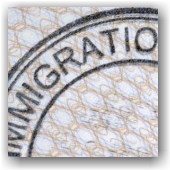
On November 20, 2014, President Obama announced efforts to retool critical aspects of the immigration system—how we enforce immigration laws, how we process immigration benefits, how we encourage further business innovation, and how we welcome immigrants to this nation.
Following the address, executive agencies made available intra-agency memoranda and fact sheets detailing specific actions that have already been taken, or will be taken in the future in ten areas within the confines of the law. These actions generally involve border security, the current unlawfully present population, or future legal immigration.
Below we link to Fact Sheets that address the details that we are aware of at this time of the 10 Executive Action Initiatives with links to the memoranda. Additional guidance will be forthcoming.
The expansion of the DACA program that has now removed the age restriction and increases employment authorization from 2 year to 3-year increments, is expected to go into effect on or about February 20, 2015. The implementation of DAPA, the Deferred Action for Parental Accountability, that allows parents of US citizens and lawful permanent residents who have been present in the country since January 1, 2010 to request deferred action and employment authorization, is expected to roll out approximately mid-May 2015.
Resources:
http://www.uscis.gov/immigrationaction
http://www.dhs.gov/immigration-action
http://www.immigrationpolicy.org/special-reports/guide-immigration-accountability-executive-action
Should you have questions at this time or would like to retain our office to assist you or your employees with their immigration matters, please contact us at info@immigrationcompliancegroup.com or call 562 612.3996.
Tags: Business Innovation, DACA, DAPA, Department Of Homeland Security (DHS), Executive Action, H-1B, H-4, I-9 Form, ICE, Immigration News, Immigration Reform, Investor Visas, Undocumented Workers, USCIS
Posted in Comprehensive Immigration Reform, Congress, DACA | DAPA, Department Of Homeland Security (DHS), Employer Compliance, H-1B Visas, I-9/E-Verify News, ICE, Immigration News | Comments Off on Executive Actions on Immigration
Sunday, January 5th, 2014
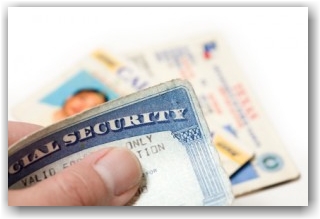 DHS/ICE continues to issue Notices of Intent to Fine (NOFs) at an unprecedented rate for Form I-9 related infractions. Mistakes occur in the I-9 process, it’s inevitable. While establishing a written compliance policy, training and careful prevention is the best approach. All employers should take time at the beginning of each year to conduct an internal audit and self-examination of their systems, operating procedures, and past and present practices for handling I-9s, as well as to access training needs for the employees charged with handling and supervising the I-9 process. We also recommend that you review your E-Verify submissions, as well as revisiting just how compliant your I-9 software really is with your vendor if you are using an electronic system.
DHS/ICE continues to issue Notices of Intent to Fine (NOFs) at an unprecedented rate for Form I-9 related infractions. Mistakes occur in the I-9 process, it’s inevitable. While establishing a written compliance policy, training and careful prevention is the best approach. All employers should take time at the beginning of each year to conduct an internal audit and self-examination of their systems, operating procedures, and past and present practices for handling I-9s, as well as to access training needs for the employees charged with handling and supervising the I-9 process. We also recommend that you review your E-Verify submissions, as well as revisiting just how compliant your I-9 software really is with your vendor if you are using an electronic system.
While there are many checklists and do-it-yourself guides and webinars available on the Internet and elsewhere, consulting a licensed attorney or specialist in the field who is familiar with I-9 and E-Verify compliance issues can save employers hours of research, provide a solution tailored to your organization, and save you thousands of dollars in fines and penalties should ICE knock on your door.
When ICE notifies an employer of their intention to perform an audit, it opens the door for an onslaught of inquiries and investigation from other government agencies that range from SSA mis-match issues to Department of Labor (DOL) wage and hour, USCIS, IRS, and more if you have areas of incompliance in your operating procedures. This is not the time during an audit when under pressure to clean up compliance problems.
New employers are often more at risk because many are not even aware of the I-9 requirement, and probably are also unaware of the need for all employees to complete the I-9 Form. Some are aware, but they lack knowledge concerning the regulations that govern the form; such as, timeframes, acceptable documents, form retention, and other important details that are integral to the process. Particularly, there are problems with industries such as IT consulting, healthcare, staffing agencies, and other organizations with multiple locations in regard to completing the I-9-Form remotely with the employer’s designated agent and employee in different locations.
These are just a few reasons why we urge you to assess the strengths and weaknesses of your present compliance program, and start the New Year fresh with a renewed commitment to implement best practices that will provide the foundation upon which you can develop and maintain a more compliant business and workforce.
You might be interested in joining our LinkedIn group, I-9/E-Verify: Smart Solutions for Employers,” and signing up to receive via RSS feed or email our Blog posts.
Tags: +, Department Of Homeland Security (DHS), DOL, E-Verify, I-9 AUDIT, I-9 Best Practices, I-9 Comipliance, I-9 Form, I-9 Training, I-9/E-Verify News, ICE, Immigration News, Legal Workforce, OSC, SSA
Posted in Department Of Homeland Security (DHS), Department Of Labor (DOL), Employer Compliance, Healthcare, I-9/E-Verify News, ICE, Immigration News, OSC, Social Security, Staffing Agencies, USCIS | Comments Off on Compliance Audits are Recommended for Employers at the Beginning of the New Year
Friday, November 29th, 2013
 On December 8, 2013 E-Verify will release new and revised Memorandums of Understanding (MOUs) that are tailored to each access method.
On December 8, 2013 E-Verify will release new and revised Memorandums of Understanding (MOUs) that are tailored to each access method.
The changes were made in response to customer feedback and to update the MOUs with policy and process changes. Users will find that the new versions have more plain language and are easier to understand, with new titles that clearly identify the access method to which the MOU applies, and bullets that have been changed to letters and numbers to make searching and citation easier. Also, the lengthy sections have been broken up.
Please take the time to review and become familiar with the new MOU’s that apply to your access method; refer to the Fact Sheet and the preview of the new MOUs here. You can also access this information under “View Essential Resources” by logging into E-Verify to review the new and revised MOUs.
What you need to know
- Current E-Verify users will not be required to execute a new MOU, but are bound by any and all enhancements to the E-Verify program including the new or revised MOUs that apply to their access method. Current users should become familiar with the new or revised MOU that applies to them. The effective date of the MOU for existing users is January 8, 2014.
- The E-Verify enrollment process has not changed. New Users will review and execute the new or revised version of the MOU that applies to their access method during enrollment. The effective date of the MOU for new users is December 8, 2013.
- The new and revised MOUs include several updated provisions such as enhanced privacy protections and instructions for reporting privacy and security breaches.
Revised Memorandums of Understanding
TeleConferences
Two teleconferences will be hosted by USCIS to introduce and discuss the revisions schedule as follows:
1) For General Audience: December 11(Wed.) 2:30 – 3:30 EST. Will discuss the revisions made to the existing MOU’s and will open up for Questions. Register here
2) For E-Verify Users: December 12 (Thurs.), 2:30 – 3:30 EST. USCIS officials will provide an overview of the three new MOUs for Web service participants, and be available to answer questions. Register here
If you have any questions regarding the registration process, or if you have not received confirmation email within two business days, please email us at Public.Engagement@uscis.dhs.gov.
Tags: Department Of Homeland Security (DHS), E-Verify, E-Verify MOU, Employment Eligibility Verification, I-9 Form, I-9/E-Verify News, I-9/E-Verify News, ICE, Immigration News, Legal Workforce, SSA, USCIS
Posted in Employer Compliance, I-9/E-Verify News, ICE, Immigration News, Social Security, USCIS | Comments Off on E-Verify Update —–New/Revised MOU’s Released
Monday, November 11th, 2013

While DHS/ICE continues to issue Notices of Intent to Fine (NOFs) at an unprecedented rate for Form I-9 related infractions, this is yet another reminder that you can choose to pay the fine or you can contest the fine and file for a hearing (within 30 days of receipt of the NOF) before an Administrative Law Judge (ALJ) who handles cases related to employer sanctions, document fraud and unfair immigration-related employment practices. OCAHO has more than proven that they are willing to reassess and lower fees in just about every case in recent months.
Note that many employer sanctions cases never proceed to the hearing stage because either the parties reach a settlement with the approval of the ALJ, or the ALJ resolves a case through a prehearing ruling.
We recommend that your first step in the process be to retain experienced representation that specializes in the practice area of employer compliance to guide you step by step through the process – don’t attempt to go this alone. The next step is to understand the process that has been summarized very efficiently in the recent Fact Sheet that we refer to here
Should you have any questions or wish to become a client of our office, please contact us or refer to our services & solutions page.
Tags: ALJ I-9 Hearing, Department Of Homeland Security (DHS), Document Fraud, DOL, Employer Sanctions, I-9 Fees, I-9 Form, I-9/E-Verify News, ICE Audit, ICE Investigation, Immigration News, IRCA, Legal Workforce, Notice of Intent to Fine, OCAHO, OSC, SSA
Posted in DOJ, Employer Compliance, Federal Contractors, I-9/E-Verify News, ICE, Immigration News, OSC, Social Security | Comments Off on How to Contest an I-9 Notice of Intent to Fine (NOF)
Thursday, October 10th, 2013

On June 15, 2012, President Obama signed a memo calling for deferred action for certain undocumented young people who came to the U.S. as children and have pursued education or military service here. Applications under the program which is called Deferred Action for Childhood Arrivals (“DACA”) began on August 15, 2012. Individuals that meet particular criteria, are awarded employment authorization (a/k/a an “EAD Card”) by USCIS.
USCIS does not alert employers when EAD cards have been issued to existing employees, and the employee is under no obligation to present the document to the employer. However, should they do so, the employer is obligated to examine the document.
The Attached Fact Sheet identifies the employer’s obligations during the Form I-9 process and provides specific guidance to employers on the treatment of EADs issued by USCIS to DACA recipients, whether they be current employees who come forward on their own, or new hires.
Note that DACA guidance does not direct employers to perform E-Verify queries on current employees who present DACA work authorization. Rather, it states that employers should complete a new Form I-9 and perform an E-Verify query in certain situations involving material changes to identity information. More on this topic can be found in the new M-274 Handbook on pages 23-24.
Should you like to become a client of our office or have particular questions pertaining to this topic, please feel free to contact us.
Tags: DACA, DACA EAD Cards, DACA Fact Sheet, DOL, E-Verify, EAD Employment Authorization, I-9 AUDIT, I-9 Form, I-9 Reverification, I-9 Training, I-9/E-Verify News, ICE, Immigration News, Legal Workforce, M-274, OSC, SSA, USCIS
Posted in DACA | DAPA, Department Of Homeland Security (DHS), Department Of Labor (DOL), Employer Compliance, I-9/E-Verify News, ICE, Immigration News, OSC, Social Security | Comments Off on Form I-9 Processing for DACA Recipients
Friday, September 27th, 2013
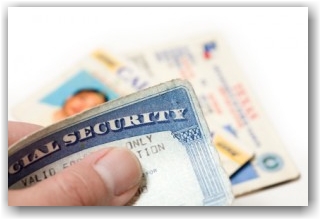
USCIS has indicated that not all SSA documents referring to the ownership of the SSA account or reflecting an application for a new card, are valid receipts for the I-9 process. So, what constitutes a valid SSA replacement receipt?
The only receipt from SSA that is acceptable under the receipt rule is a receipt that states “This is a receipt to show you applied for a social Security Card and the application was for a lost, stolen or damaged document.” Any other receipt would not be acceptable. Your employee may present a receipt for the application for the replacement of any List A, List B, or List C document. The receipt is valid for 90 days. When it expires, the employee must show you the replacement document for which the receipt was given.
After the receipt expires, you should:
1) Cross out the word “receipt” and any accompanying document number
2) Record the number and other required document information from the actual document presented.
3) Initial and date the change.
You cannot accept a receipt for the I-9 Form for an initial or renewal employment authorization, but can accept a receipt for the application for replacement of a lost, stolen or damaged employment authorization document. You cannot accept receipts if employment will last less than three days.
The Three-Day Business Rule
Q: How does an employer that is operational over the weekend but whose HR office (which is open during regular business hours but closed on weekends) count the 3-business days for I-9 purposes?
A: Employers are required to complete the I-9 Form within 3 business days of the employees first day of work for pay. If the business is operational on the weekends, this counts towards the 3 day timeframe for I-9 completion. Thus, in order to remain in compliance for businesses that operate on the weekends, we suggest that the first day of work for pay be on a week day when the HR office representatives who are trained in I-9 procedures are available.
Tags: I-9 Form, I-9 process, I-9 Receipt Rule, I-9 Three-Day Rule, I-9/E-Verify News, ICE, Immigration News, Legal Workforce, OSC, Social Security Cards, SSA, USCIS
Posted in Employer Compliance, I-9/E-Verify News, ICE, Immigration News, OSC, Social Security, USCIS | Comments Off on I-9 Form Guidance: Social Security Replacement Receipts and the Three Day Business Rule
Tuesday, July 2nd, 2013
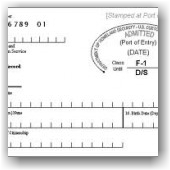
If CBP issued an electronic Form I-94 to one of your employees upon their admission to the United States at an airport or seaport, they should be able to access it from the CBP website at http://cbp.gov/xp/cgov/travel/id_visa/i-94_instructions/.
If they are unable to access their I-94 information from the CBP website, they should call or go to a CBP deferred inspection location to correct the problem. For more information about Deferred Inspection Sites refer to the link. In the alternative, they may file Form I-102 with USCIS and request their Form I-94; however, there is a filing fee and this process may take weeks.
Also remember, that the name as it exactly appears on the passport should be entered into the system. We find that many problems retrieving the I-94 are due to incorrect name entries.
Tags: CBP, Deferred Inspection, Employment Eligibility Verification, FOREIGN TRAVEL, I-9 Form, I-9/E-Verify News, I-94 Arrival-Departure Card, I-94 Automation, I-94 Card, Immigration News
Posted in Employer Compliance, I-9/E-Verify News, ICE, Immigration News | Comments Off on I-94 Card Automation Update
Thursday, March 28th, 2013
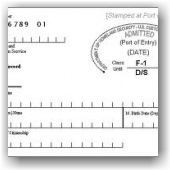
April 29, 2013 Update: We link to a recently released Demonstration Video that walks you through the required information to access your I-94 record and provides information how to maneuver through the fields of the online template.
Yesterday our firm participated in a CBP Stakeholder teleconference on this topic and we were surprised how much progress they have made since the last call which left us very nervous about how the automation process of the I-94 would play overall and particularly for I-9 purposes.
I have to say, after yesterday’s call, we really didn’t have any complaints. We share some of the pertinent points with you below:
1) The website to access I-94 arrival-departure cards is www.CBP.gov/I94 . It will be “live” the end of April as they phase in automation at air and sea ports commencing April 30, 2013. The website will provide access to I-94 records going back two years.
2) Electronic I-94’s will be available on the website for printing immediately upon entry (that was very good news). So, there should be no lag time with a new employee’s ability to produce an I-94 record when required for I-9 purposes or for social security cards, DMV, etc.
3) When an employee changes their status inside the USA, changes employers or extends their stay, (such as an H-1B visa holder), USCIS will continue to print the I-94 records at the bottom right of the USCIS I-797 approval notices.
4) CBP will post on their website a sample electronic I-94 for viewing.
5) Whereas one will no longer be able to immediately check to see that the information stamped on the I-94 matches up with their visas and I-797 approval notice, it was clear that applicants will need to be more proactive in verbally clarifying this with the CBP officers, particularly in situations when an H-1B visa holder is traveling on a still valid visa annotated with the name and validity date of a previous employer petition, but now has a new employer USCIS I-797 approval notice with a different validity period.
6) More on #5, it was stated that one could immediately check their I-94 on a mobile device and if there was an error, could get it corrected by getting back in line at the airport.
7) CBP plans to provide nonimmigrants with a brochure or a list of instructions in 12 different languages upon entry concerning how to obtain their I-94’s online.
8) The paper version of the I-94’s can still be turned in at the airport upon departure; however, they will collect departure information electronically through the departure manifest when leaving the USA.
9) DMV was represented on the call and indicated that they were having problems with incorrect name entries and FNU’s being entered. It was stated that the name on the electronic record will either match the name as it appears on the visa or the passport. When accessing the record online, the name, passport number, date of birth and date of admission will be required information to access the electronic I-94 record.
If you have any questions, please feel free to call our office at 562 612.3996 or email info@immigrationcompliancegroup.com.
Tags: CBP, Employment Eligibility Verification, I-9 Form, I-94 Arrival-Departure Card, I-94 Automation, I-94 Card, I-94 Entry Card, List A Documents, Passport, USCIS
Posted in Uncategorized | Comments Off on Electronic I-94 Demonstration Video
Thursday, March 7th, 2013
 A new edition of the I-9 employment eligibility verification form has been introduced today and has been published in the Federal Register as of this writing. USCIS has been working on the revised I-9 form for more than a year. In March 2012, it published a proposed revision for public comment.
A new edition of the I-9 employment eligibility verification form has been introduced today and has been published in the Federal Register as of this writing. USCIS has been working on the revised I-9 form for more than a year. In March 2012, it published a proposed revision for public comment.
The new edition, dated March 8, 2013, will take effect immediately on publication and will become the only acceptable version of the form. Employers who need to make necessary updates to their business processes to allow for use of the new Form I-9 may continue to use other previously accepted revisions (Rev.02/02/09)N and (Rev. 08/07/09)Y until May 7, 2013. After May 7, 2013, all employers must use the revised Form I-9 for each new employee hired in the United States. Employers who are not using the I-9 form following the 60-day grace period will be subject to fines and penalties under 274(a) of The Act (The Immigration and Nationality Act), IRCA, as well as ICE.
The revised Form I-9 has several new features, including new fields and a new format to reduce errors. The instructions to the form also more clearly describe the information employees and employers must provide in each section. To order copies of the new I-9 form from USCIS, you can call 1-800-870-3676.
For those of you who manage your I-9 forms via an electronic software vendor, this is absolutely the right time to have a conversation with them concerning their compliance with the new form. This is also a good time to think about additional training for your staff. Refer here for our services and solutions. We will be reviewing the form very carefully in the next few days and will post our comments and guidance.
Tags: Employment Eligibility Verification, I-9 Form, I-9/E-Verify News, ICE, Immigration News, Immigration Reform, New I-9 Form, Social Security, USCIS
Posted in I-9/E-Verify News, ICE, Immigration Legislation, Immigration News, Social Security, USCIS | Comments Off on NewsFLASH —— New I-9 Form Released March 8, 2013
Thursday, February 28th, 2013
The SSA Program Policy Information Site contains the public version of the Program Operations Manual (POMS). The POMS is a primary source of information used by Social Security employees to process claims for Social Security Benefits.
Today, SSA issued updates on several topics of interest to our readers and clients concerning I-9, EAD and SSA document examination and interpretation, as follows:
1) EAD’s for NIVs: https://secure.ssa.gov/poms.nsf/lnx/0110211420
2) How to Verify Asylee Status: https://secure.ssa.gov/poms.nsf/lnx/0110211213
3) Evidence of Asylee Status When Form I-94 (Arrival and Departure Record) is Submitted: https://secure.ssa.gov/poms.nsf/lnx/0110211207
4) Evidence of Asylee Status for an SSN Card: https://secure.ssa.gov/poms.nsf/lnx/0110211205
You will find this a wealth of excellent information and a great resource. Should you have any questions or comments, please feel free to contact our office.
Tags: Asylee I-9 Verification, EAD Card, EADs for Nonimmigrants, Employment Authorization, I-9 Document Interpretation, I-9 Form, I-9/E-Verify News, Immigration News, Social Security Administration POMS, SSA I-9 Guidance; I-9 Document Examination, USCIS
Posted in Employer Compliance, I-9/E-Verify News, ICE, Immigration News, Social Security, USCIS | Comments Off on I-9/E-Verify News: Recent Social Security Administration Guidance and Updates









